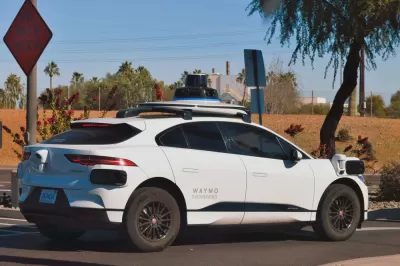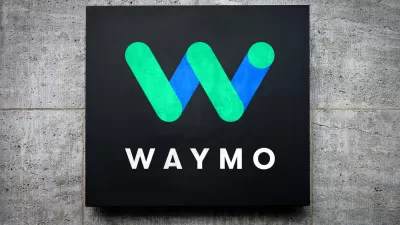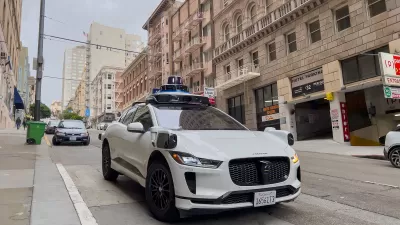As they become more common on some U.S. streets, autonomous vehicles are impeding emergency response operations and blocking traffic, idling in neighborhoods, and defying law enforcement.

What’s a self-driving car to do when it’s not doing its job? For Waymo vehicles in Phoenix, the answer is parking, lights and sensors still on, in legal curbside parking spots, reports Lane Sainty for Arizona Republic.
According to Waymo, “Continuing to drive around would add to traffic congestion and be inefficient, he said, and waiting nearby — as opposed to going back to a Waymo facility — means vehicles can arrive quickly when called.”
The Waymo rollout in Phoenix, like in other cities, hasn’t been entirely smooth. “On April 7, a busy First Friday night downtown, a number of self-driving Waymo vehicles came to a stop along First Street, the resulting traffic jam captured in a viral TikTok. And on Wednesday morning, an autonomous Waymo vehicle stopped unexpectedly in the middle of Roosevelt Row, forcing commuters to drive around it.”
In San Francisco, writes Joe Eskenazi in a Mission Local article, self-driving cars are causing even bigger headaches, in some cases impeding emergency vehicles and personnel and driving into dangerous situations. “To date, no firefighter has been run over, and no fire victim has suffered because emergency personnel have been unable to move their vehicles or access fire hydrants. But this, like the fact there was no electricity running through those downed Muni wires, appears to be a series of lucky breaks.”
FULL STORY: Where do driverless cars go when they're on break? Some idle in Phoenix neighborhoods

Alabama: Trump Terminates Settlements for Black Communities Harmed By Raw Sewage
Trump deemed the landmark civil rights agreement “illegal DEI and environmental justice policy.”

Study: Maui’s Plan to Convert Vacation Rentals to Long-Term Housing Could Cause Nearly $1 Billion Economic Loss
The plan would reduce visitor accommodation by 25% resulting in 1,900 jobs lost.

Why Should We Subsidize Public Transportation?
Many public transit agencies face financial stress due to rising costs, declining fare revenue, and declining subsidies. Transit advocates must provide a strong business case for increasing public transit funding.

Wind Energy on the Rise Despite Federal Policy Reversal
The Trump administration is revoking federal support for renewable energy, but demand for new projects continues unabated.

Passengers Flock to Caltrain After Electrification
The new electric trains are running faster and more reliably, leading to strong ridership growth on the Bay Area rail system.

Texas Churches Rally Behind ‘Yes in God’s Back Yard’ Legislation
Religious leaders want the state to reduce zoning regulations to streamline leasing church-owned land to housing developers.
Urban Design for Planners 1: Software Tools
This six-course series explores essential urban design concepts using open source software and equips planners with the tools they need to participate fully in the urban design process.
Planning for Universal Design
Learn the tools for implementing Universal Design in planning regulations.
Caltrans
Smith Gee Studio
Institute for Housing and Urban Development Studies (IHS)
City of Grandview
Harvard GSD Executive Education
Toledo-Lucas County Plan Commissions
Salt Lake City
NYU Wagner Graduate School of Public Service





























